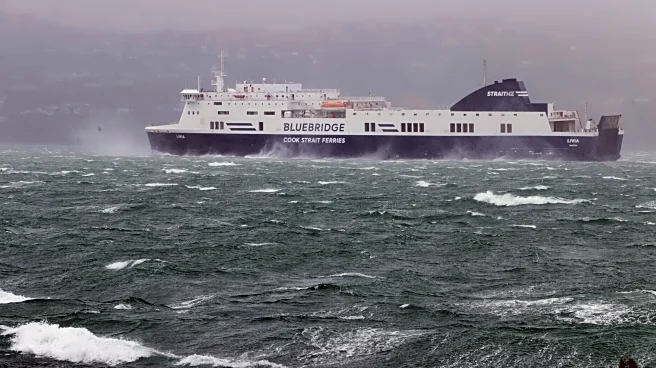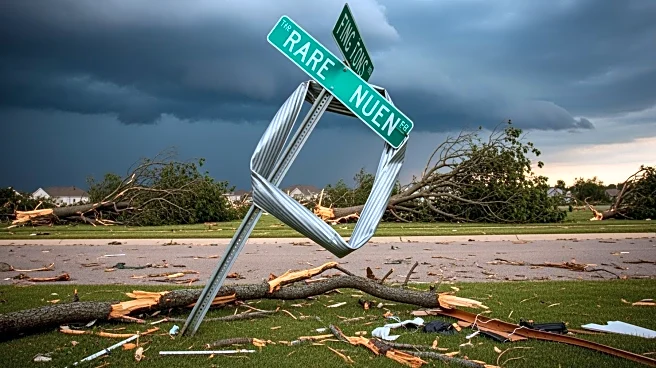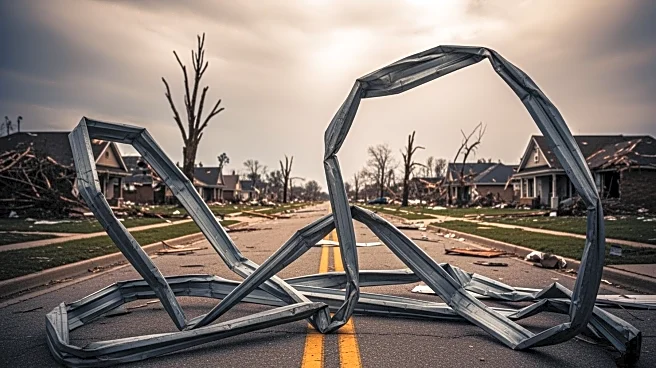What's Happening?
New Zealand is experiencing severe weather conditions with strong winds reaching speeds of up to 155 km/h, resulting in approximately 90,000 homes losing power. The winds have affected the entire South
Island and parts of the North Island, leading to the cancellation of over 100 flights and the closure of roads and libraries. Authorities have issued red wind warnings, the highest alert level, and have urged residents to stay indoors and avoid travel. In Wellington, a man was killed by a falling tree branch, and a woman was blown onto oncoming traffic but survived. Canterbury officials have declared a state of emergency to facilitate disaster response efforts.
Why It's Important?
The severe weather conditions in New Zealand highlight the vulnerability of infrastructure to natural disasters, impacting daily life and safety. The power outages and flight cancellations disrupt transportation and communication, affecting both residents and businesses. The declaration of a state of emergency underscores the seriousness of the situation and the need for coordinated disaster response. The incident also raises concerns about the preparedness of regions to handle extreme weather events, which are becoming increasingly common due to climate change.
What's Next?
Authorities are working to restore power progressively, and residents are advised to prepare for further outages. The state of emergency in Canterbury will enable more resources to be allocated for disaster response and recovery. As the winds continue, further disruptions to travel and daily activities are expected. The situation may prompt discussions on improving infrastructure resilience and emergency preparedness in the face of extreme weather conditions.
Beyond the Headlines
The event may lead to increased scrutiny on climate change policies and the need for sustainable infrastructure development. It also highlights the importance of community preparedness and the role of government in ensuring public safety during natural disasters. Long-term, this could influence policy changes aimed at mitigating the impacts of climate change and enhancing disaster response capabilities.












